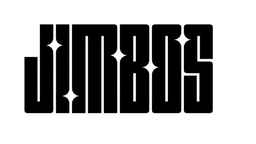How to Safely Clean Engine Bays — What Most Guides Don’t Tell You
Want a clean, factory-fresh engine bay? In this simple guide, I’ll show you how to safely clean your engine — without damaging sensitive components — and how to protect it for a great finish.
Cleaning your engine bay can seem intimidating — but it doesn’t have to be.
When done correctly, engine detailing makes a huge difference in your car’s overall appearance — and can even help with resale value. But many guides either overcomplicate it or leave out critical safety tips.
In this post, I’ll show you:
- The biggest mistakes to avoid when cleaning your engine
- The exact steps to clean your engine safely
- The products and tools I recommend
- How to dress and protect your engine for a factory-fresh look
Biggest Mistakes to Avoid
- Using high-pressure water directly on sensitive components
- Over-saturating electrical connections and sensors
- Skipping the pre-soak — causing you to scrub more aggressively later
- Not drying the engine properly — leading to corrosion or electrical issues
- Using greasy dressings that attract dirt
👉 Follow the process below to avoid these common pitfalls.
Step-by-Step Guide to Safe Engine Bay Cleaning
Step 1 — Prep the Engine Bay
Before you start, make sure the engine is cool to the touch. Remove any loose debris (leaves, dirt) by hand or with compressed air.
Do you need to cover components?
Bagging off components is optional. In my process, I don’t bag off the alternator — but I do advise being careful around sensitive parts and electrical connectors. Use low-pressure water and avoid direct spraying on these areas.
Step 2 — Pre-Soak with The Super Soaper
This is the secret to safer, easier engine bay cleaning — pre-soaking helps break down grease and grime without aggressive scrubbing.
👉 Mix 2 ounces of The Super Soaper in a pump sprayer and apply liberally to the entire engine bay. Let dwell for 3–5 minutes.
Step 3 — Foam the Engine Bay
For deeper cleaning, follow the pre-soak with a foam application:
- Mix 4 ounces of The Super Soaper in a foam cannon.
- Apply thick foam over the entire engine bay.
- Let dwell for 3–5 minutes — but do not let it dry.
Step 4 — Agitate with Brushes
Use a variety of soft to medium brushes to gently agitate dirt and grime. Focus on:
- Plastic covers
- Rubber hoses
- Metal surfaces
👉 Related Product: A Variety of Detailing Brushes
Step 5 — Rinse Carefully
Use a gentle spray (not a high-pressure stream) to rinse the engine bay. Be mindful around:
- Alternator
- Fuses and relays
- Exposed electrical connections
Less water is better here — rinse until the foam and dirt are gone, then stop.
Step 6 — Dry the Engine Bay
Use a blower (such as a Ryobi blower) to quickly blow water out of crevices and connectors. This prevents pooling and speeds up drying.
👉 Related Video: Watch the Full Engine Bay Detailing Process
Step 7 — Dress and Protect
Once the engine bay is dry, apply a water-based dressing like All Dressed Up (diluted 4:1) to plastics and rubber surfaces.
This restores a factory-fresh look without greasy buildup — and helps prevent future dirt adhesion.
Step 8 — Final Safety Check
After finishing, start the engine and let it run for a few minutes. This helps evaporate any remaining moisture and confirms everything is working properly.
Recommended Products for Engine Bay Cleaning
- The Super Soaper — Pre-soak and foam cleaner
- Detailing Brushes — Safe brushes for agitation
- All Dressed Up — Water-based dressing for a factory finish
- Ryobi Blower — For safe drying
Conclusion
Cleaning your engine bay is easier — and safer — than most people think. By following this process and using the right products, you can achieve an incredible result without risk.
Just remember:
- Be mindful of sensitive components
- Use a pre-soak and foam for safe cleaning
- Dry thoroughly and protect with a proper dressing
👉 Want to see this process in action? Watch the full guide here: Ultimate Guide to Engine Bay Detailing
Happy detailing!




